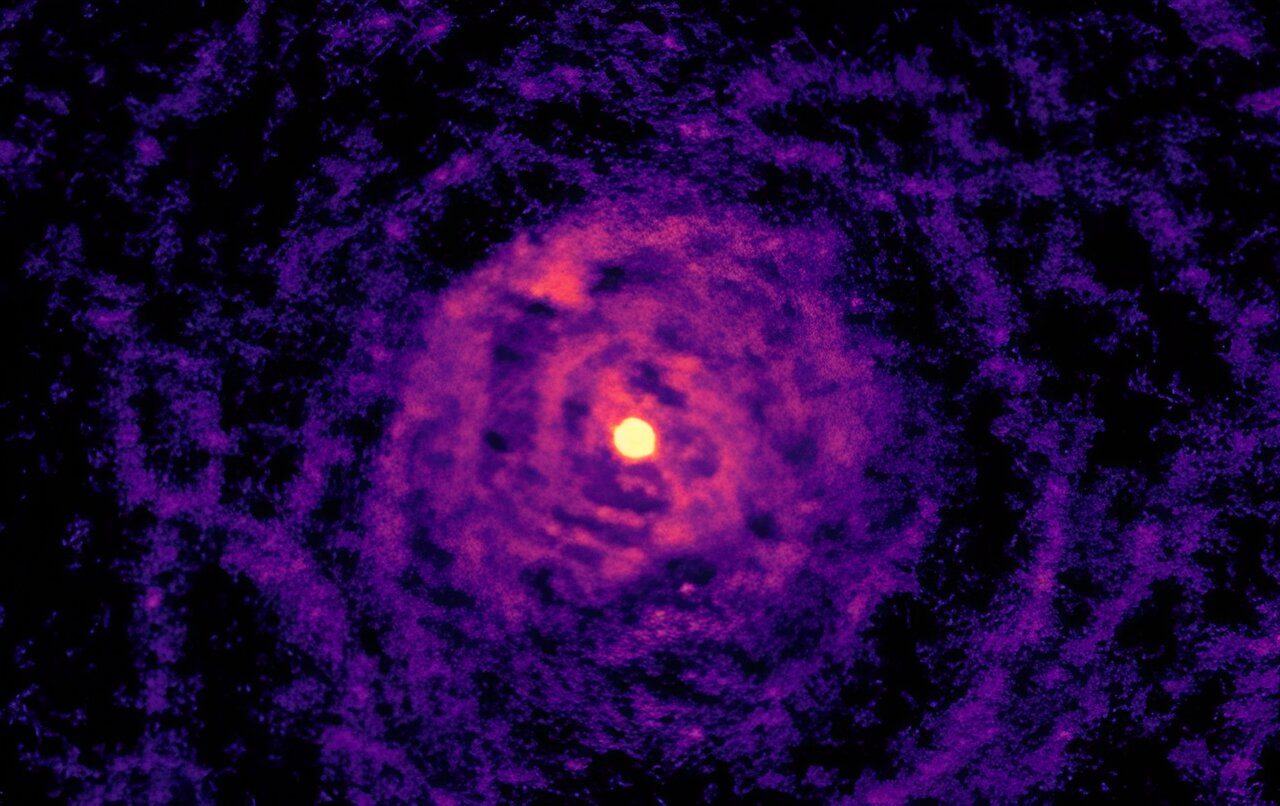An international team of scientists armed with the powerful ALMA telescope in Chile has solved the complex celestial dance of a dying star. Its research may shed light on our understanding of the evolution of space objects.

What did the astronomers see?
The study, published in the journal Nature Astronomy, will reveal new details about the orbital parameters of the red giant ending its existence, which sheds its outer layers under the influence of a strong stellar wind. The researchers came across unexpected molecular emissions from one side of the star — a cosmic anomaly indicating the participation of a hotter satellite star in this process. Scientists focused on the special emission of silicon nitride from one side of the celestial body.
The object of the scientists’ research was the W Aquilae system, where the dying star is not lonely but has a companion — a longer-lived sun-like star. Until now, the intricacies of their orbit remained a cosmic mystery, and it was only a guess that it could last for centuries.
New ALMA research
Recent research has revealed a mystery. It turns out that this is a highly elliptical orbit, the celestial bodies of which make about one rotation per millennium. The research team applied hydrodynamic modeling to decipher the effect of a satellite on the radiation of a dying star.
Visualized as concentric rings when viewed from the side, these patterns were not just theoretical, they were vividly confirmed by ALMA data. Thanks to the augmented observations of the SPHERE instrument on the Very Large Telescope of the European Southern Observatory and historical data from the Hubble Space Telescope, the team has uncovered the secrets of the movement of stars.
The study is the first to apply a method using ALMA to identify chemical signatures left by past stellar collisions. This instrument promises to reveal the hidden satellites of other mysterious dying luminaries, which are not visible due to thick clouds of dust.
In a galaxy where almost half of the stars like our Sun exist in pairs or threes, this study marks an important milestone in understanding how the components of stellar pairs affect their celestial neighbors.
According to phys.org
Follow us on Twitter to get the most interesting space news in time
https://twitter.com/ust_magazine


